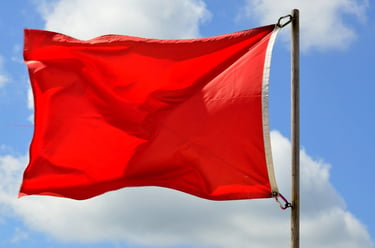 Using an oil skimmer to remove oil from coolant, process water and wastewater has many benefits, such as reducing maintenance, lowering environmental impact, improving working conditions, and potentially creating new revenue opportunities.
Using an oil skimmer to remove oil from coolant, process water and wastewater has many benefits, such as reducing maintenance, lowering environmental impact, improving working conditions, and potentially creating new revenue opportunities.
But, to reap those benefits, your oil skimmer must be completely effective, efficient, and reliable.
In this post, we cover five signs that your oil skimming solution isn’t reliable.
1. You have to bring in backup to remove oil buildup.
The purpose of an oil skimmer is to remove oil from the surface of water. If the amount of surface oil continues to grow even with continual oil skimming, you should question the selection of and/or the effectiveness of your oil skimmer. Only in a rare case would a reliable oil skimmer require any outside help in removing oil. If residual oil is left over after skimming, your unit isn’t working properly. A good oil removal system should pick up waste oil in its entirety.
2. Too much oil in the wastewater.
To greatly enhance the performance of wastewater treatment operations, oil skimmers are used to remove the oil before the water reaches the treatment plant. If oily water reaches the treatment plant, the oil may coat and foul instruments, increasing the maintenance required. So, if the wastewater treatment operator comments that there is too much oil in the water, this is an indication that your oil skimmer in not working.
If you are discharging your wastewater to the municipality, they may monitor the contaminants and investigate pollution sources. The municipality may charge you for routine testing until the issue is resolved. If the EPA finds that your business isn’t meeting environmental standards, you can potentially face legal action, fines and more rigorous testing in the future. Being the target of such an investigation can also tarnish your brand’s reputation. A proper oil removal solution will help eliminate these issues.
3. The maintenance team is sick of working on your skimmer.
When an oil skimmer is operating as intended, the maintenance required for the skimmer and all machinery or equipment involved in the entire wastewater treatment process is reduced. When the oil skimmer itself is constantly malfunctioning, however, that no longer holds true.
If your skimmer is breaking down often or not functioning properly, it may be a sign that you are using an oil skimming solution that isn’t appropriate for your particular application. Because each case is different, it is imperative for a trained oil removal professional to visit the site in person to assess the issues and select the correct skimmer. In some cases, it’s a product quality issue and your skimmer was not built to last in demanding applications.
Also consider: Your skimmer might simply be nearing the end of its life cycle. Just like every piece of machinery, oil skimmers wear down over time. While certain models have a longer lifespan than others, eventually replacement will be necessary.
4. Your coolant and other process liquids aren’t lasting as long as they could.
Proper oil removal provides numerous ways for improving your operational efficiencies. One of these is lowering your expenses by prolonging the life of coolant, process liquids and the chemicals used to treat wastewater.
When tramp oil mixes with coolants, it reduces the coolant’s effectiveness and can form a sticky substance that clogs lines and filters. Tramp oil also reduces the coolant’s lifespan, increasing the rate at which coolant needs to be disposed of and replaced —both of which greatly increase operational costs.
So, if you suspect tramp oil is building up, or if you are looking to reduce your operating costs by extending the life of your coolants, consider reviewing your tramp oil removal system.
5. Unpleasant working conditions
Is there an oily mist or haze in the air? Do you smell a foul odor? Your oil skimmer may not be doing its job effectively. Oil that is left to build up on the water’s surface can lead to growth of anaerobic bacteria, resulting in bad odors and can even cause skin disorders. In cases where waste oil comes into contact with hot surfaces, it can produce a hazardous oily mist, or haze that workers then breathe into their lungs.
When an oil skimmer operates properly and removes all of the oil from the surface of coolant, process water and wastewater, it eliminates the source of potential health issues.
Address These Red Flags: Upgrade Your Oil Skimming Solution
Whether your old skimmer is in need of a replacement or you’re using a model that isn’t capable or effective in your application, we can evaluate your particular situation and recommend suitable equipment or potential upgrades. Contact us for a problem-free oil skimming solution today.

